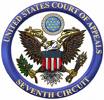Ice Gets Iced
Earlier this summer, in Southern Union Co. v. United States (No. 11-94), the Supreme Court seemed to reverse course yet again in its on-and-off revolution in the area of jury-trial rights at sentencing. The revolution began with Apprendi v. New Jersey (2000), which held that a jury, and not a judge, must find the facts that increase a statutory maximum prison term. The revolution seemed over two years later, when the Court decided in Harris v. United States that no jury was required for mandatory minimum sentences. But, another two years after that, in Blakely v. Washington, the revolution was back on, with the Court extending Apprendi rights to sentencing guidelines. Blakelywas especially notable for its hard-nosed formalism: Apprendi was said to have created a bright-line rule firmly grounded in the framers’ reverence for the jury; we are not in the business, declared Justice Scalia for the Blakely majority, of carving out exceptions to such clear rules in the interest of efficiency or other contemporary policy concerns.
Then came Oregon v. Ice in 2009, which seemed to signal that the Court had again grown weary of the revolution.

